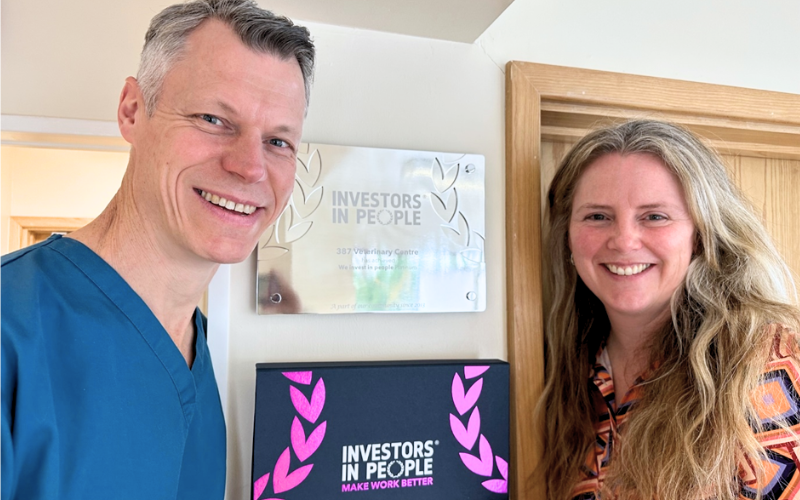You’ve made the decision to set up your own practice, and be the master of your own destiny. So, now what? Starting a new business is daunting, but help is always at hand….
Veterinary Start-up Entrepreneurs are driven by three main motivations:
a sense of purpose, mastery and autonomy.
In business, this translates into two main goals: to build a business they can be proud of, namely a practice that provides quality medicine and excellent service, and to make sufficient money to run the business well and achieve a reasonable lifestyle. Both are important, but the first goal isn’t attainable without the second.
Achieving profitability
A start-up practice should be able to generate a positive cash flow, ideally within the first year to 18 months. This means you have money left over after you’ve taken out your expenses, salaries, and loan repayments. After the first year, a start-up practice should enjoy a cumulative positive cash flow.
Yet profitability won’t just land in your lap. To achieve this goal, you need to:
- draft a clear vision for your business that you can share with your team members and professional advisors
- choose a location that offers plenty of potential clients
- project your likely revenue and expenses and outline the steps
- you’ll take to attract clients to your new business
What’s your vision? Starting your own practice is not the easy option – it takes commitment and hard work. However, if you’re still willing to walk across those burning coals to start your own practice from scratch, then you should have a very clear vision of what you want your practice to be.
Write this vision down. Write down the size of the practice, the look and feel, the quality of medicine you’ll offer, what specialities you’ll provide and who your clients will be. Be sure to include details that explain how your practice will be different from the others in your area. A vision without a plan is just a dream.
This vision will impact every facet of the launch process, right up to your grand opening and beyond. Once you’ve put your vision on paper, look at
it every day and share it with your team members and your team of professional advisors, and use it for recruitment.
Where’s the perfect location?
Choosing your spot is one of the most important decisions you’ll make. It may be strongly influenced by family or lifestyle factors, but do consider the factors that will influence your future success:
Demographics. What’s the make-up of the community?
Look at a 10-mile radius to determine whether enough pet owners are in the surrounding area (42 per cent of households) and will they make good potential clients? Consider the mix of residential versus commercial property, whether residents are homeowners or renters, what their income levels are, whether homes are multi-family or single dweller, what the home values are and whether the area is growing.
Competition. Is there room for your practice in this community?
How many other veterinary practices are in the area or are scheduled to be built? How many of those practices serve the clientele you’re targeting? Visit area practices to find out these answers.
Facility. Should you buy or rent?
Usually, renting is the more prudent cash-flow decision for a start-up practice. But other factors, such as availability, wanting a free-standing facility or area property prices, may influence your decision.
How much space do you think you’ll need? Moderation is the key here. You probably don’t need a behemoth facility at first, but consider about 1,000 sq ft to 1,500 sq ft per full-time vet. Nothing sinks a new practice quicker than unmanageable rent, yet you don’t want to outgrow your space only months after you’ve moved in. Good design can accommodate this flexibility.
Client experience. Lastly, think about how the site you’re considering will affect clients’ experiences and the message your new practice sends.
Examples are: how’s the traffic? Is the signage visible? Do you have enough parking spaces? Does the entrance need landscaping?
One of the positives about starting your own practice is you get to pick exactly what you want. So take advantage of this opportunity, and pick a location that’s right for you.
Who’s on your team?
You can’t do this on your own, so enlist some help. Your team of professional advisors – including your solicitor, accountant, architect and/or builder, lender, and veterinary business consultant – will be instrumental in helping you build the practice you want. You don’t want the cheapest, but you do want the best.
How will day-to-day operations work?
Almost all of you have had some experience working in practices you didn’t own. And you’ll clearly apply the lessons you’ve learned about what works – and what doesn’t – when it comes
to running your practice. You’ll learn a lot more in your first few years as an owner. No matter what prior experience you bring to the job, you’ll need to consider the following issues:
Staffing. Initially, you probably want to keep your staff on the lean side and you’ll be tempted to “do it all” yourself. This is not sustainable. As business grows, you’ll need more people, and employment costs will rise to 40 per cent to 45 per cent of revenue. Keep in mind a successful practice relies on good veterinary care, but equally important are customer services, good administration and a productive stress-free team.
This, of course, depends on your ability to pay good people well.
Hours. What days will you be open? What will your hours be? Will you offer any after-hours appointments? How will you staff the practice during those time periods?
These are tough questions in our 24/7 retail world and it is tempting, in the adrenaline-fuelled early days, to want to provide “full-service” provision. Plan for a practice size to support your ambition or make sure you have access to alternative after-hours provision. Being the wealthiest corpse in the graveyard is not your ambition…
Pricing. Before you can make any decisions about your actual fees, you must decide what your practice philosophy will be and, therefore, what your cost base will be.
Will you be a Mercedes or Hyundai? Your prices should follow suit – cover your costs, plus make a reasonable profit. A really common trait we often come across in the majority of our clients’ practices is their failure to charge appropriate and profitable professional fees – that is, offering discounts and undercharging. One tip: comparing prices with local practices for clinical fees is dangerous and useless. This may help you set prices for shopped items, such as vaccinations and elective surgeries, but is not a basis for professional time.
Equipment. What toys do you want? Write down what you need for a good first opinion practice. Remember, you can always acquire more stuff later.
Beware of the temptation to lease too much. Lease costs on top of loans can escalate fixed costs dramatically.
Make sure you run a break-even analysis before committing to more “stuff”.
Practice management software. Offering much more than scheduling and billing, current software options allow you to integrate inventory, boarding, pharmacy, digital imaging and more.
Demo several practice management programs and pick the one that gives you, and your team, the tools you need and that will help you work efficiently. It should assist you with keeping accurate records, analysing your data easily and marketing to your clients directly.
To learn more about the software you’re considering, talk with other practices that use the product. Find out what they like and don’t like about the software, hidden costs and their relationships with the providers including installation, training and support.
Where will the money come from?
Seriously, get some professional help putting together financial projections for your new practice. For one, lending institutions will require them before they approve a loan. More importantly, these projections show you what to expect and help you plan accurately.
We recommend preparing a three-year vision, a one-year mission, a 90-day focus and a 12-week implementation plan, along with a detailed business plan. Your veterinary business consultant can help you evaluate the following key areas:
Revenue. Of course, revenue is the big unknown. Start by deciding how many days a week and how many hours a day you’ll be open, and what hourly rate you need to achieve per 15-minute consult. Then estimate a conservative patient count and a conservative average charge per patient.
You’ll want to consider revenue from diagnostics, surgery and inpatient care, as well as mark-ups on drugs and retail, to calculate potential gross revenues. Sector benchmarks are available from https://members.vetdynamics.co.uk/vet-dynamics-index/
Expenses. Break down expenses by major area. The best way is to allocate percentages of revenue for drugs and consumables (20 per cent), staff (40 per cent) buildings (8 per cent), administration (7 per cent) CPD and marketing (4 per cent), and finance (6 per cent), to retain a reasonable profit (15 per cent).
Owner salary. What is the minimum amount of money you need to cover your personal expenses? Factor this amount in initially and pay yourself first. Eventually, when the cash flow is there, you can set a more comfortable base salary.
Debt financing. Once your final loan and leases have been established, what will the monthly payment be?
Keeping these financial projections conservative is critical. Once you’re comfortable with the assumptions, analyse the results. Can your revenue in the first year sustain the rent you’re about to pay, the staff you’re about to hire, the loan payments you’re about to make and the salary you’re going to need?
These are the big pieces of the financial puzzle. If, after putting conservative projections together, your numbers just don’t add up, you know something needs to be reworked or reconsidered. So get your business consultant to help.
How will you attract clients?
To attract the number and quality of clients you’ve estimated, you’ll need to market your new practice before and after launch. Building trust and awareness in your local community is the quickest way to achieve sustainable growth.
Traditional marketing, such as telephone directories, radio, local flyers or newspaper adverts, tends to be expensive and not very effective.
Developing a great website, social media (Facebook, Twitter, YouTube and Instagram), sending out an e-newsletter or blog, or hosting an open house, and inviting neighbouring businesses and residents, tend to be cheaper and far more effective. If this is not your forte, get some help from your team.
No matter the strategies you adopt, your marketing campaign should tie everything in together. The look of the facility and your logo should be evident in any materials you send out. A unified message helps build momentum as you develop your practice over time.
Marketing is just the promise. Follow up your marketing campaign by making sure new and prospective clients see you’re offering friendly and knowledgeable staff, high-quality medicine and excellent customer service.
Remember, word of mouth is the best marketing you can get.
Summary
Sure, it’s daunting to start a practice knowing you don’t have any clients and not knowing whether you’ll make enough revenue to pay your expenses and turn a profit.
As an entrepreneur, though, you’re ready to tackle this challenge; you believe in your vision and your drive and that your new practice will be successful – and profitable. You may not have all the answers, but you’ve got the questions, and with a great team of advisors this is the first step on your way to achieving the purpose, the mastery and the autonomy of owning your own practice.
By Alan Robinson





